Indoor gardening has become increasingly popular in recent years, and as a result, the demand for high-quality grow lights has skyrocketed. LED and HPS grow lights are two of the most popular types of grow lights available in the market today, and many indoor gardeners face a tough choice when it comes to deciding between the two.
While both types of grow lights serve the same purpose, they differ significantly in terms of their technology, energy efficiency, and performance. In this article, we will delve into the key differences between LED and HPS grow lights and help you make an informed decision on which type of grow light to choose for your indoor garden.

If you are interested in LED and HPS Grow Lights you can also be interested in indoor hydroponic systems and lights for it to help you easily start growing plants and grow tomatoes all year round. Our top articles: Our Picks for the 5 Grow Tent Kits, Picks for the 5 Aeroponics Systems, Our Picks for the 5 Hydroponic Bucket Systems with Buyer’s Guides, and Our Picks for the 5 best indoor vertical Garden, and Led Grow Lights for an indoor plant, and The Best Hydroponic Tower for Indoor Garden.
What Are LED Grow Lights?

LED grow lights are a type of artificial light source designed to provide plants with the light they need for photosynthesis and growth. LED stands for “Light Emitting Diode,” which is a semiconductor device that emits light when an electric current is passed through it.
LED grow lights are different from traditional incandescent or fluorescent bulbs because they produce light in a specific spectrum that is ideal for plant growth. They provide plants with the right balance of red, blue, and sometimes green light, which are the wavelengths that plants absorb the most for photosynthesis. This means that LED grow lights can be tailored to the specific needs of different plants at different stages of growth, making them more energy-efficient and effective than other types of grow lights.
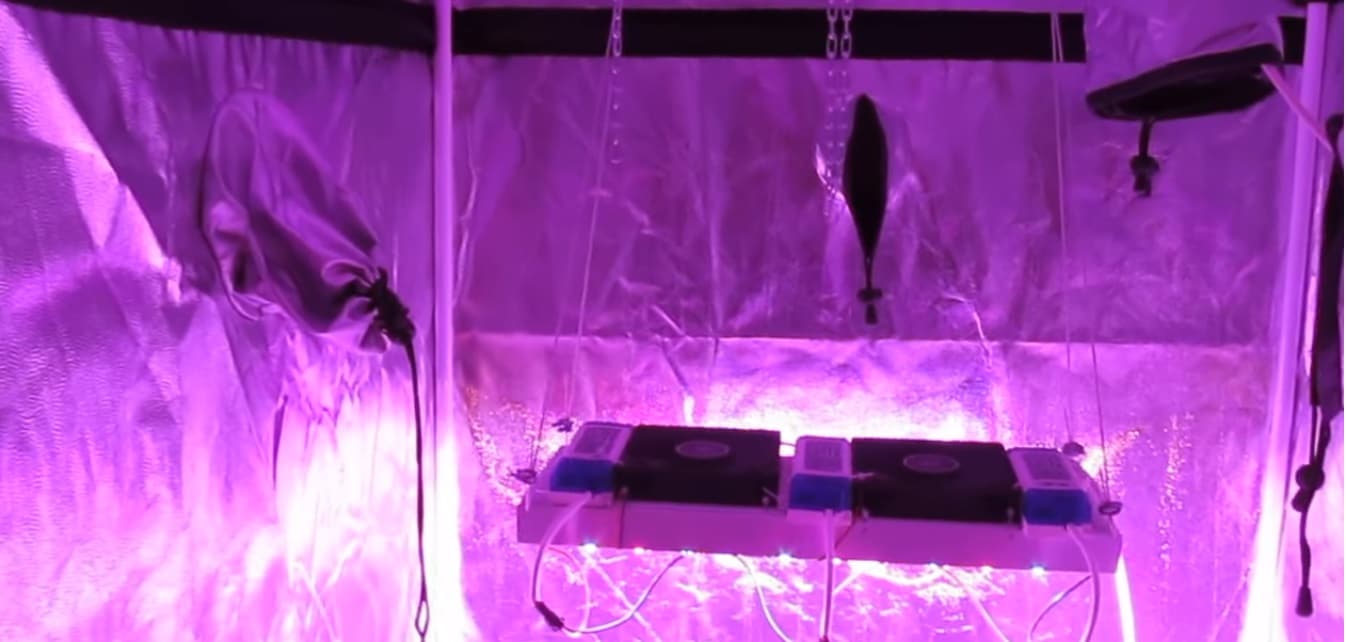
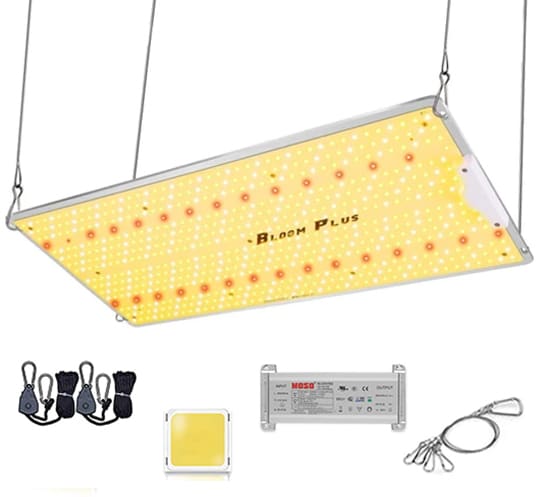 BLOOM PLUS LED Grow Lights, BP 2500W 2X4ft Coverage Grow Light Use with 646packs Samsung Diodes(Includes IR)
BLOOM PLUS LED Grow Lights, BP 2500W 2X4ft Coverage Grow Light Use with 646packs Samsung Diodes(Includes IR)
- For Indoor Hydroponic Plants Seeding Veg and Bloom
- Dimmable Sunlike Full Spectrum Plant Grow Lights
- 30-day money-back guarantee and a trusted 3 years warranty
LED grow lights have several advantages over other types of grow lights. They are more energy-efficient, produce less heat, and last longer than traditional grow lights. They are also more customizable, allowing growers to adjust the spectrum and intensity of the light to suit the needs of their plants. As a result, LED grow lights are becoming increasingly popular among indoor gardeners and commercial growers alike.
| Pros | Cons |
| Energy-efficient and cost-effective to run | Higher upfront cost compared to other options |
| Produce less heat, reducing the need for fans | Blue light can be harmful to human eyes |
| Last longer and require less frequent changes | May not be suitable for certain plant species |
| Highly customizable for different plant needs | May require additional accessories for use |
| Environmentally friendly and safe to dispose of | Initial setup may require more technical know-how |
What Are HID Grow Lights?
HID grow lights, or High-Intensity Discharge grow lights, are a type of artificial lighting system that has been used for indoor plant cultivation for many years. HID grow lights work by passing an electrical current through a gas-filled chamber, which produces light. There are two main types of HID grow lights: Metal Halide (MH) and High-Pressure Sodium (HPS).
Metal Halide (MH) bulbs produce a blue-white spectrum of light that is ideal for the vegetative stage of plant growth, while High-Pressure Sodium (HPS) bulbs produce a yellow-orange spectrum of light that is ideal for the flowering stage of plant growth.
HID grow lights are a popular choice among indoor gardeners and commercial growers because they provide a high level of light intensity, which can help to maximize plant growth and yield. They are also relatively affordable compared to other types of grow lights.
I think that, HID grow lights have some downsides. They are less energy-efficient than other types of grow lights, which means that they produce more heat and require more electricity to operate. They also have a shorter lifespan and require more frequent replacement compared to LED grow lights. Additionally, HID grow lights can be less customizable and may not be suitable for all types of plants.
| Pros | Cons |
| Provide high levels of light intensity | Less energy-efficient than other types of grow lights |
| Affordable and widely available | Produce more heat than other types of grow lights |
| Suitable for a wide range of plant species | Require ballasts to operate, adding to the cost |
| Can be used for both vegetative and flowering | Shorter lifespan and require more frequent replacement |
| Less complicated to set up and use than LED lights | Spectrum and intensity cannot be easily customized |
Comparison of LED Grow Lights vs HPS Technology
| Feature | LED Grow Lights | HPS Grow Lights |
| Energy Efficiency | Highly energy-efficient | Less energy-efficient |
| Heat Production | Produce less heat | Produce more heat |
| Lifespan | Longer lifespan | Shorter lifespan |
| Spectrum Customization | Highly customizable | Limited customization options |
| Initial Cost | More expensive upfront | Less expensive upfront |
| Operating Cost | Lower operating cost | Higher operating cost |
| Light Intensity | Lower light intensity | Higher light intensity |
| Suitable for | Leafy greens, herbs, and vegetables | Flowering plants, fruits, and vegetables |
| Ballast Requirement | Not required | Required for operation |
| Environmental Impact | More environmentally friendly | Less environmentally friendly |
Both types of grow lights have their own dedicated fan base, and it can be challenging to determine which one is right for your needs. Below, we will take a deep dive into the key differences between LED and HPS grow lights, including their technology and cost-effectiveness.

By the end of this chapter, you should have a better understanding of the pros and cons of each technology and be able to make an informed decision on which type of grow light is best suited for your indoor gardening needs.
Upfront Cost of The Light
When it comes to upfront cost, HPS grow lights tend to be significantly cheaper than LED alternatives. HPS bulbs are much less expensive upfront and can be purchased for just a few hundred dollars.
On the flip side, an LED grow light of comparable power will cost almost twice as much. If you’re on a tight budget, then an HPS bulb might be the better choice – though over time, you’ll likely save money with an LED due to its increased efficiency and longer lifespan. Ultimately, your decision should be based on what best suits your needs and budget.
Light Spectrum and Quality
Light spectrum and quality are key factors to consider when choosing a grow light. For the best results, you need a light that can offer a full spectrum of wavelengths – just like the sun. LED grow lights have a distinct advantage in this area, as they have the ability to emit different colors of light at the same time. This means that instead of having one monochromatic color, you get an even mix of red, blue, green and yellow, which is ideal for plants that require specific colors for photosynthesis.
HPS bulbs do not produce such a wide range of colors, and so may not be as effective in providing plants with the light they need to thrive. However, HPS bulbs are still good for providing intense light, which can be beneficial for certain stages of plant growth. Ultimately, it’s up to each individual grower to decide what type of light is best suited for their needs.
Energy Efficiency
When it comes to energy efficiency, LED grow lights are the clear winner. LEDs use significantly less electricity than HPS bulbs and can be up to 40% more efficient. This means that over time, you’ll save a great deal of money on your energy bills when using an LED.
In my opinion, they produce much less heat than their HPS counterparts, which means that you won’t have to worry about cooling your grow room as much. The combination of these factors make LED grow lights the perfect choice for those looking to save money and reduce their environmental footprint.
Intensity, Penetration and Uniformity of Light
The intensity of light is important because it ensures that plants receive enough energy from the light to perform photosynthesis. Penetration is important because the further a light can penetrate down into the canopy, the more evenly distributed and uniform the light will be.
LED grow lights generally produce higher levels of intensity while being able to penetrate deeper than HPS bulbs. This makes them ideal for providing even and uniform lighting throughout an entire plant, as opposed to having hot spots with more intense lighting.
Additionally, LED lights do not require additional cooling measures like HPS bulbs due to their lower wattage, which helps reduce energy costs.

Heat Generated by Luminaires
High Pressure Sodium (HPS) and Metal Halide (MH) bulbs produce a great deal of heat, which can make the environment in your grow room uncomfortable and cause temperature fluctuations. This can be especially problematic during the summer months.
LED grow lights, on the other hand, produce significantly less heat than HPS or MH lamps. This makes them ideal for growers who want to avoid having to install additional cooling measures like air conditioning units in their grow room.
In my opinion, LED lights have a much longer lifespan than traditional bulbs, so you won’t need to replace them as often, saving you money on energy costs over time.
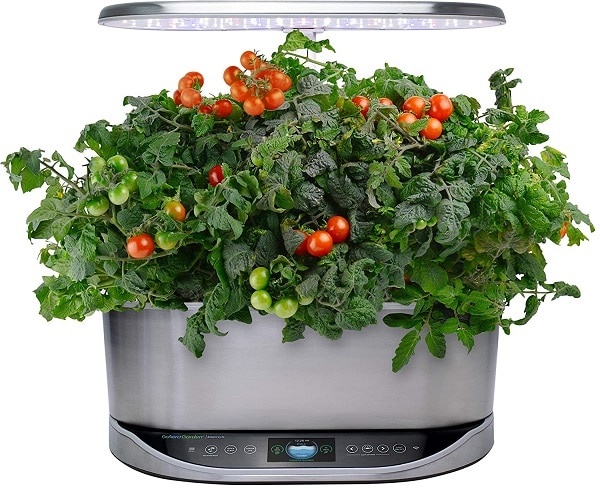
 AeroGarden Bounty Elite - Indoor Garden with LED Grow Light
AeroGarden Bounty Elite - Indoor Garden with LED Grow Light
- WiFi and Alexa Compatible, Stainless Steel Grow up to 9 plants, up to 24duim
- Includes everything you need to grow
- 50 watt LED Grow Lights, perfect spectrum for fast growth & big harvests
Service Life and Maintenance Costs
High Pressure Sodium (HPS) and Metal Halide (MH) bulbs need to be replaced up to a few times every year, meaning frequent maintenance costs and energy expenditures. On the other hand, LED grow lights have a lifespan of over 50,000 hours – meaning they can last up to 10 years with little to no maintenance required. This makes them ideal for both commercial and home growers – especially those who want to save money on energy costs over time.
Furthermore, LED grow lights produce significantly less heat than HPS or MH lamps – making them great for growers who want to keep their growing environment comfortable without having to install additional cooling measures like air conditioning units in their grow room.
BONUS: LED vs HPS – What to Choose?
Choosing the right type of grow light is a crucial decision for any indoor gardener, and it can be challenging to determine which type of grow light is best suited for your needs. The decision to choose LED or HID grow lights will depend on your individual needs and preferences. Also consider factors below.
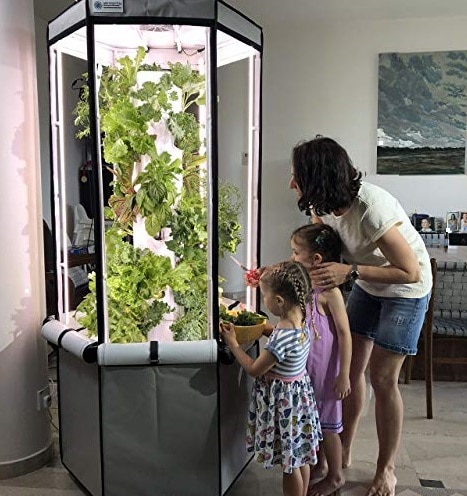
 Aerospring 27-Plant Vertical Hydroponics Indoor Growing System
Aerospring 27-Plant Vertical Hydroponics Indoor Growing System
- Easy to use aeroponic system for your home
- Fan - Grow Lettuce, Herbs, Veggies & Fruits
- Grow smart & eat healthy, 20 gallon water reservoir Grow Tent, LED Grow Lights
When to Choose LED Grow Lights?
LEDs offer excellent value for money and make sense if:
- You’re looking for energy-efficient grow lights that will save you money on your electricity bill in the long run.
- You want to have more control over the spectrum and intensity of light your plants receive.
- You want to avoid producing excess heat in your grow space.
- You’re growing plants that require specific light spectrums at different stages of growth.
- You want to reduce the need for frequent bulb replacements and maintenance.

When to Choose HID Grow Lights?
I think that, HIDs are usually more affordable upfront than LEDs as well, making them a good choice if:
- You’re looking for a more affordable option upfront.
- You need to cover a larger area and require high light intensity.
- You’re growing plants that are less sensitive to changes in light spectrum or intensity.
- You don’t mind the heat produced by HID grow lights, and you don’t need to invest in additional cooling systems.
- You prefer a simpler setup and don’t need to customize the spectrum and intensity of the light.
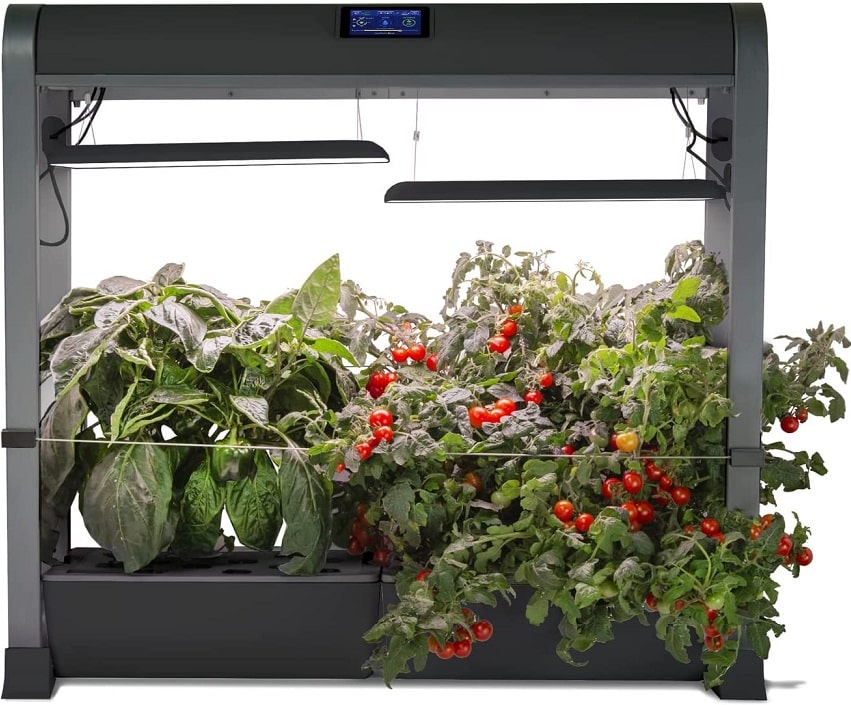
 AeroGarden Farm 24Plus with Salad Bar Seed Pod Kit - Indoor Garden with LED Grow Light, Black
AeroGarden Farm 24Plus with Salad Bar Seed Pod Kit - Indoor Garden with LED Grow Light, Black
- Indoor Garden with LED Grow Light, Black, Automatic timer makes sure the lights go on and off
- Adjustable grow height of 24Inch, and can be stacked with other Farm gardens
- Includes two Salad Bar Seed Pod Kits, featuring 9 lettuce pods, 3 herb pods, and 12 tomato pods
FAQs
What is the difference between LED and HPS grow lights?
LED grow lights use light-emitting diodes to produce light in specific wavelengths, while HPS grow lights use high-intensity discharge lamps that produce light by passing an electrical current through a gas-filled chamber.
Which type of grow light is more energy-efficient?
LED grow lights are more energy-efficient than HPS grow lights and can save you money on your electricity bill in the long run.
How long do LED grow lights last compared to HPS grow lights?
LED grow lights generally have a longer lifespan and require less frequent bulb replacements compared to HPS grow lights.
Which type of grow light is better for larger grow spaces?
HPS grow lights are better suited for larger grow spaces, as they offer higher light intensity and can cover a wider area than LED grow lights.
Can you use LEDs together with HPS?
Yes, it’s possible to use both LED and HPS grow lights together in the same grow space. This can help to provide a wider spectrum of light and maximize plant growth and yield.
Can I switch from HPS to LED during flowering?
While it’s possible to switch from HPS to LED grow lights during the flowering stage, it’s generally not recommended as it can cause stress to the plants and affect their growth and yield.
Can you grow vegetables on LED and flowers on HPS?
Yes, it’s possible to use different types of grow lights for different types of plants in the same grow space. LED grow lights are typically better suited for leafy greens and vegetables, while HPS grow lights are better suited for flowering plants.
What lamps are used by professional growers?
Professional growers use a wide range of grow lights depending on their specific needs and preferences. However, some of the most commonly used lamps include high-quality LED grow lights, HPS grow lights, and ceramic metal halide (CMH) grow lights. Professional growers also often use a combination of different types of grow lights to provide the optimal spectrum of light for their plants.
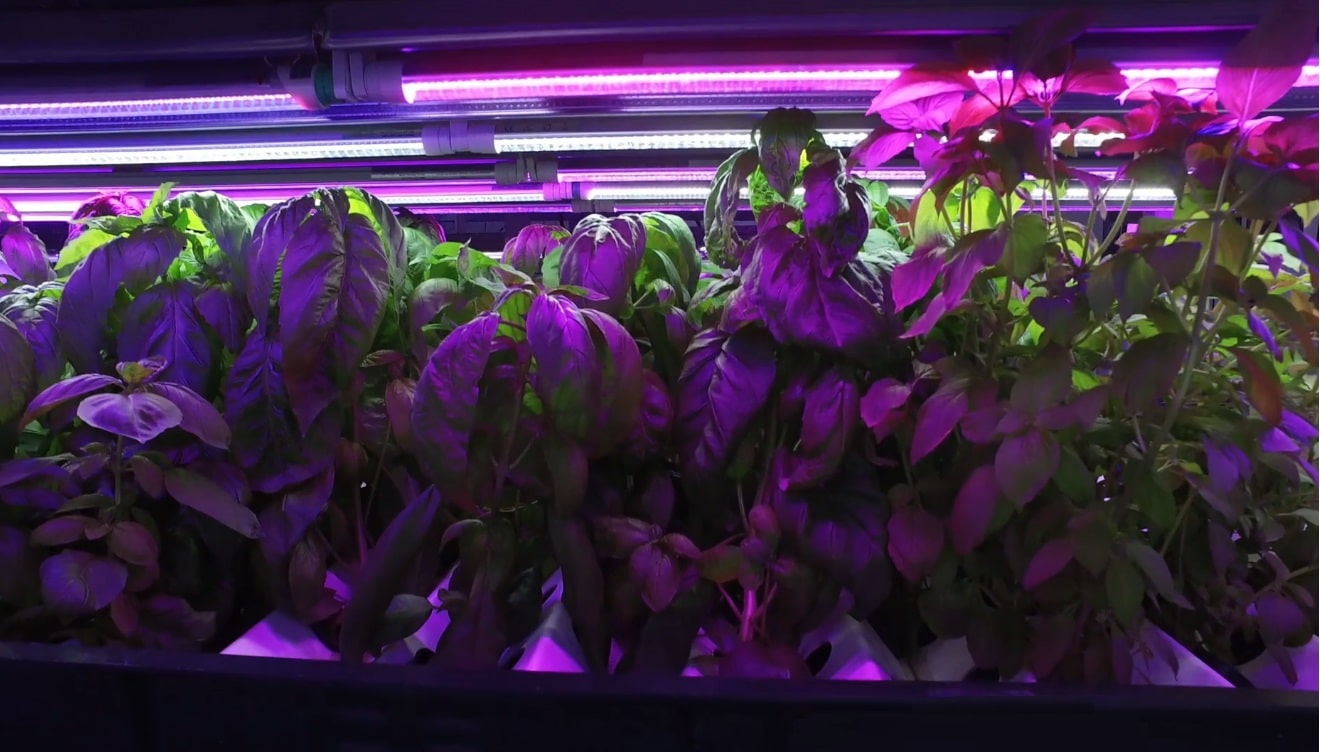
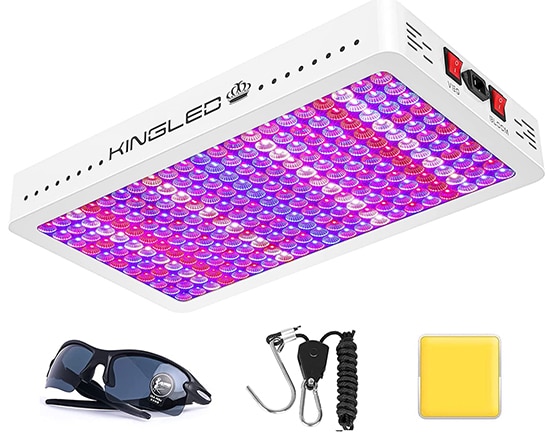
Leave a Reply